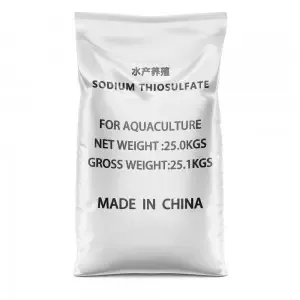



Understanding the Chemical Composition and Properties of Manganous Sulphate in Various Applications
Understanding Manganous Sulphate Chemical Formula, Properties, and Applications
Manganous sulphate, also known as manganese(II) sulfate, is an inorganic compound with the chemical formula MnSO₄. As an important manganese compound, it plays a vital role in various chemical processes, agricultural applications, and industrial uses. This article delves into the structure, properties, synthesis, and applications of manganous sulphate, highlighting its significance across various fields.
Chemical Structure and Properties
Manganous sulphate consists of manganese in its +2 oxidation state and the sulfate ion (SO₄²⁻). The molar mass of MnSO₄ is approximately 151.00 g/mol. In its most common form, it appears as a pink crystalline solid, known as manganese(II) sulfate monohydrate (MnSO₄·H₂O), which has a molar mass of about 169.01 g/mol when accounting for the water of hydration.
In terms of solubility, manganous sulphate is highly soluble in water, which enhances its utility as a source of manganese ions in various applications. The compound may also be found in an anhydrous form (without water), though the hydrated form is more prevalent due to its stability and ease of handling.
Synthesis of Manganous Sulphate
Manganous sulphate can be synthesized through various methods. One common approach involves the reaction of manganese oxide (MnO) with sulfuric acid (H₂SO₄). The reaction can be summarized as follows
\[ \text{MnO} + \text{H}_2\text{SO}_4 \rightarrow \text{MnSO}_4 + \text{H}_2\text{O} \]
Another method utilizes manganese carbonate (MnCO₃) with sulfuric acid, which yields manganous sulphate and carbon dioxide as a byproduct
\[ \text{MnCO}_3 + \text{H}_2\text{SO}_4 \rightarrow \text{MnSO}_4 + \text{H}_2\text{O} + \text{CO}_2 \]
By controlling the conditions of these reactions, including temperature and concentration, manufacturers can produce manganous sulphate of varying purity and hydration states suitable for specific applications
.Applications of Manganous Sulphate
manganous sulphate formula

Manganous sulphate is utilized in a myriad of applications, which can be broadly categorized into agricultural, industrial, and chemical uses.
1. Agricultural Use
Manganese is an essential micronutrient for plants, playing a crucial role in photosynthesis, nitrogen metabolism, and the synthesis of chlorophyll. Manganous sulphate is often used as a fertilizer or soil amendment to correct manganese deficiency in crops. It can be directly applied to the soil or used as a foliar spray, aiding in the overall health and yield of various crops, including fruits, vegetables, and grains.
2. Industrial Applications
In the industrial sector, manganous sulphate plays a significant role in metal treatment processes. It is used in the production of ferromanganese, a crucial alloy in steel manufacturing. Additionally, it serves as a reducing agent in various chemical reactions and electrochemical processes. The compound is also used in the preparation of other manganese compounds, which are integral to ceramics, glass, and battery production.
3. Chemical Reagent
Manganous sulphate is employed as a reagent in laboratory settings for various chemical analyses and reactions. It is used in the preparation of manganese(II) solutions and as a catalyst in certain organic reactions. Furthermore, it is sometimes utilized in water treatment processes, aiding in the removal of contaminants and the prevention of fouling in systems.
Safety and Environmental Considerations
While manganous sulphate is generally considered to be of low toxicity, it is essential to handle it with care in both laboratory and industrial environments. Appropriate safety measures, such as wearing gloves and goggles, should be taken to prevent skin and eye irritation. Additionally, like many chemical compounds, its release into the environment should be controlled to avoid potential toxicity to aquatic life and ecosystems.
Conclusion
In summary, manganous sulphate (MnSO₄) is a versatile compound with diverse applications ranging from agriculture to industrial processes. Its significance as a source of manganese, as a chemical reagent, and as a fertilizer highlights the importance of this compound in both natural ecosystems and human endeavors. Understanding its properties and safe handling practices ensures its beneficial use while minimizing potential risks to health and the environment.
-
Why Sodium Persulfate Is Everywhere NowNewsJul.07,2025
-
Why Polyacrylamide Is in High DemandNewsJul.07,2025
-
Understanding Paint Chemicals and Their ApplicationsNewsJul.07,2025
-
Smart Use Of Mining ChemicalsNewsJul.07,2025
-
Practical Uses of Potassium MonopersulfateNewsJul.07,2025
-
Agrochemicals In Real FarmingNewsJul.07,2025
-
Sodium Chlorite Hot UsesNewsJul.01,2025










